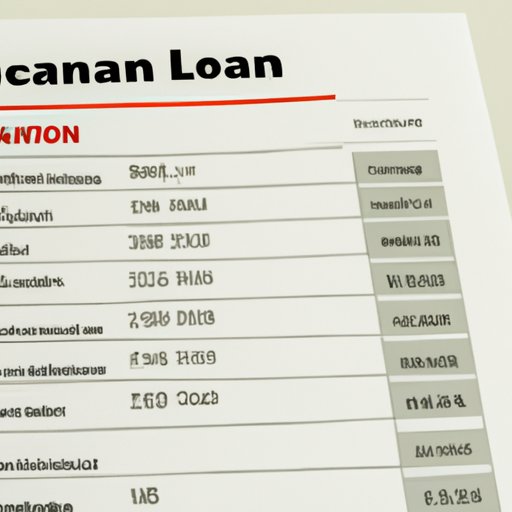Introduction
Starting a business can be an exciting venture that allows you to pursue your entrepreneurial dreams. However, it takes money to make money – and often, startup capital isn’t easy to come by. Taking out a small loan may be one way to help finance your business idea. A small loan is typically any loan that is under $50,000, and can be used for a variety of expenses related to starting a business.
Reasons to Take Out a Small Loan
There are many reasons why you might need a small loan to start a business. You may need to purchase equipment or supplies, hire employees, rent office space, or cover other operational costs. Taking out a loan can help you cover upfront costs while you work on building your customer base and generating revenue.
Research Different Types of Loans
Before taking out a loan, it’s important to do research and understand the different types of loans available. There are three main types of loans you should consider: traditional bank loans, peer-to-peer lending, and online lenders.
Traditional Bank Loans
Banks offer several types of loans specifically designed for small businesses. These loans may have lower interest rates than other types of loans, but they also tend to have stricter requirements. Banks typically require good credit and collateral for these types of loans, so it’s important to do your research before applying.
Peer-to-Peer Lending
Peer-to-peer (P2P) lending is an alternative to traditional bank loans. In this type of loan arrangement, individuals or groups lend money directly to borrowers without going through a bank. P2P loans usually have higher interest rates than traditional bank loans, but they may be easier to qualify for if you don’t have perfect credit.
Online Lenders
Online lenders are another option for small business owners who need a loan. Online lenders often offer more flexible terms than banks, but they typically charge higher interest rates. It’s important to read the fine print and understand all of the fees associated with online lending before signing any loan agreement.

Calculate Loan Amount and Repayment Schedule
Once you’ve decided which type of loan you want to apply for, it’s time to calculate how much you need to borrow and determine a repayment schedule. To do this, you’ll need to consider your business needs and estimate the total cost of what you need to purchase. Once you have an estimate, you can use an online loan calculator to figure out how much you need to borrow and what your monthly payments will be.

Check Credit Score and History
Your credit score and history play a major role in determining whether or not you’re approved for a loan. Before applying for a loan, it’s important to understand your credit score and review your credit report. Your credit score is a number between 300 and 850 that reflects your creditworthiness, and it’s based on factors such as your payment history, outstanding debt, and length of credit history.
Your credit report is a detailed record of your credit history, including information about your payment history, open lines of credit, and any negative marks such as late payments or defaults. Reviewing your credit report can help you identify any issues that could affect your ability to secure a loan.
Secure Collateral if Necessary
Some lenders may require you to secure collateral in order to get a loan. Collateral is something of value that can be used to secure the loan, such as real estate, vehicles, or valuable personal property. If you fail to repay the loan, the lender has the right to take possession of the collateral. Depending on the type of loan, you may be able to use your business assets as collateral.

Compare Rates and Terms from Different Lenders
Once you’ve determined how much you need to borrow and what kind of collateral you’ll need, it’s time to start comparing rates and terms from different lenders. Research the different options available and compare interest rates, loan terms, and fees. Make sure you read the fine print and understand all of the details before signing any loan agreement.
Consider Government-Backed Small Business Loans
The Small Business Administration (SBA) offers a variety of loan programs to help small business owners access capital. These loans are backed by the federal government, which makes them easier to qualify for than traditional bank loans. To be eligible for an SBA loan, you must meet certain criteria, such as having good credit and a solid business plan. Learn more about the SBA and its loan programs to see if you qualify.
Conclusion
Taking out a small loan to start a business can be a great way to access the capital you need to get your venture off the ground. By researching different types of loans, calculating loan amounts and repayment schedules, checking credit scores and histories, securing collateral if necessary, comparing rates and terms from different lenders, and considering government-backed small business loans, you can find the right loan for your needs.
(Note: Is this article not meeting your expectations? Do you have knowledge or insights to share? Unlock new opportunities and expand your reach by joining our authors team. Click Registration to join us and share your expertise with our readers.)
